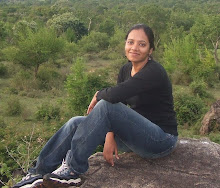Day 2. Ngadi – Jagat – 25 Kms, 420m ascent, 260m descent
Day 3. Jagat – Bagarchap – 45 Kms, 940m ascent
 We started our 12 day, 200 Km trek at Besi-Sahar after a 6 hour drive from Kathmandu. Though we were to take a bus as per the original plan, a strike in Nepal made it impossible to travel on the appointed day. Was an eye opener that things aren’t all that different in Nepal, when compared to India. Anyways, we then hired a private taxi and left the next day early in the morning at 4.AM. The ride was beautiful through sinuous roads surrounded on all sides by lush green hills, freshly washed by the monsoon rains.
We started our 12 day, 200 Km trek at Besi-Sahar after a 6 hour drive from Kathmandu. Though we were to take a bus as per the original plan, a strike in Nepal made it impossible to travel on the appointed day. Was an eye opener that things aren’t all that different in Nepal, when compared to India. Anyways, we then hired a private taxi and left the next day early in the morning at 4.AM. The ride was beautiful through sinuous roads surrounded on all sides by lush green hills, freshly washed by the monsoon rains.
It was drizzling continuously when we started the trek, so we bought plastic sheets to cover our backpacks. Mithoo, our porter, tied all the luggage (2 backpacks, 2 sleeping bags, 2 down jackets weighing around 20 kgs) into one single bundle skillfully. He wore the bundle on his back and supported the weight with a rope over his fore-head like all Nepali’s do to carry heavy loads up and down mountains.
The initial route was along the course of the river Matsyangdi (meaning fish’s tail). We trekked along this snow melted river for 10 days and saw it in its various colours and intensities. Sometimes the river would be tranquilly flowing by in all its serenity, sometimes it would be gushing by threatening to take everything along with it in its wake, and at other times it would be filled with whirlpools and eddies, highlighting the chaos in the water. Hundreds of waterfalls and streams caused by the monsoon, add to the river along its way.
We had to cross many streams on makeshift bridges (which put to test our tightrope walking skills) and walk through small waterfalls. We crossed the river numerous times by walking on long sagging suspension bridges.
Two of Fifty Indians to Trek the Annapurna!
We registered at the first ACAP (Annapurna Conservation Area Project) office at Bhulbhule where the officers were surprised to see that we were from India. We learnt that every year hardly 50 Indians trek in this route out of the total 100,000 trekkers in Nepal. And during our 12 day trek, we did not meet any other Indian, which was very surprising given that India was a neighboring country.
On day 2, We walked past amphi-theatre shaped rice-terrace farms and lush green hills with the river meandering through them.
On day 2, We walked past amphi-theatre shaped rice-terrace farms and lush green hills with the river meandering through them.
This is where we entered the beautiful Manang district and there was a welcome board which proudly proclaimed ‘The snow leopard is a symbol of Himalayan Grandeur’. However, we had no luck in sighting a snow leopard, or a blue deer or even an abominable snowman (who probably doesn’t run the danger of extinction).
After another half-day’s walk and completing almost 45 kms we were close to our destination (and exhaustion levels) Bagarchap. Here the terrain became suddenly different, filled with pine trees and for the first time, the first snow-capped mountains started to become visible.
For more pictures of the Lower Himalayas click Here.






No comments:
Post a Comment